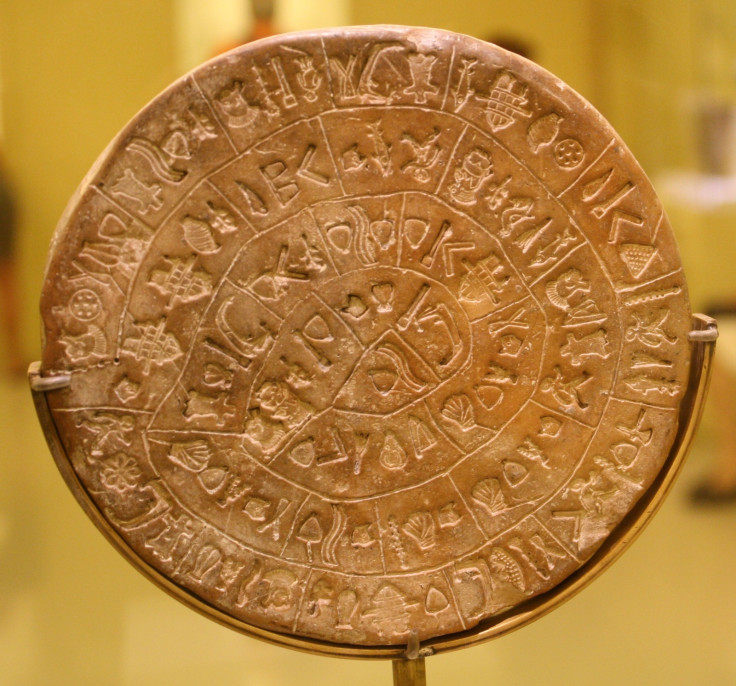Ancient Greece: 4,000 Year-Old 'CD-ROM' Code Cracked
Scientists unravelling mystery of the mysterious Minoan stone disk

A disk dating back to 1700BCE is finally revealing its secrets after being decoded by scientists.
The mysterious Phaistos disk from the island of Crete - the first literate civilisation in Europe – contains strange symbols in a spiral configuration.
For centuries, scientists have been baffled by the meaning of the tablet, which is the earliest form of printing in the world.
Dr Gareth Owens from the Technological Educational Institute of Crete believes he has deciphered the meaning behind its keywords and the message it reveals.
Inscribed on the disk are 241 pictograms created from 45 individual symbols including depictions of running men, heads with feather crowns, women, children, animals, birds, insects, tools, weapons and plants.
Dr Owens has suggested that the circular fired-clay disk contains a prayer to the mother goddess of the Minoan civilisation.
Speaking at the TEI of Western Macedonia, Dr Owens said the disk is dedicated to a "mother".
"The most stable word and value is 'mother', and in particular the mother goddess of the Minoan era," said Dr. Owens.
He believes there is one complex of signs spelling I-QE-KU-RJA, with I-QE meaning "great lady of importance" while a key word appears to be AKKA, or "pregnant mother," according to the researcher.
One side is devoted to a pregnant woman and the other to a woman giving birth.
The scientist spent six years working on the code with a colleague at Oxford University and claims about 90% of one side of the disk can now be deciphered.
In a lecture, he referred to it as the first Minoan "CD-Rom" for its shape and hard-coded data. "It could stand for Clay Disk – Read Only Minos."
Speaking in a TED talk, Owen said: "It's the closest thing to a partial Minoan Rosetta Stone."
The Phaistos disk was discovered in 1903, by Italian archaeologists excavating at the ruined Minoan palace of Phaistos in southern Crete.
Some experts believe the Phaistos disk is a modern fake, such as Dr Jerome M. Eisenberg. He wrote in Minerva magazine that the disk was created by an expert forger soon before its discovery.
Eisenberg states that he believes the object was manufactured to enhance the reputation of the archaeologist Luigi Pernier, who originally discovered the disk. Some claim Pernier forged it in order to compete with the discoveries of fellow archaeologists such as Sir Arthur Evans at Knossos.
Watch the video on how Dr Gareth Owens deciphered the ancient Minoan Phaistos Disk
© Copyright IBTimes 2025. All rights reserved.






















